Introduction: Exploring Gluten-Free Couscous
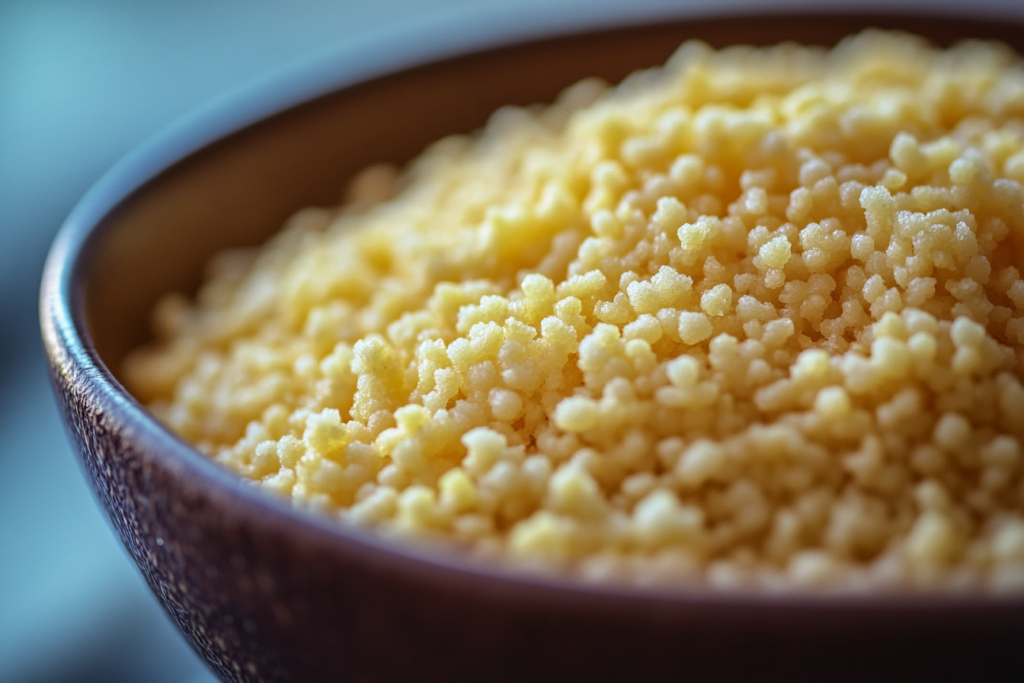
In recent years, the demand for gluten-free alternatives has skyrocketed, and couscous is no exception. Traditionally made from wheat, couscous is not naturally gluten-free, but fear not! There are plenty of delicious and nutritious options available. In this article, we’ll dive into the world of Gluten-Free couscous, exploring its benefits, how it’s made, and some mouthwatering recipes to try at home. Whether you’re gluten intolerant or simply looking to diversify your diet, this versatile grain can be a delightful addition to your meals.
Understanding Gluten-Free Couscous
What is Gluten-Free Couscous?
Wheat-free couscous is a fantastic alternative for those who need to avoid gluten. Unlike regular couscous, which is made from semolina wheat, this version is crafted from alternative grains such as corn, rice, or quinoa. These grains provide a similar texture and taste, allowing you to enjoy your favorite dishes without the gluten.
The process of making this couscous involves milling these grains into a fine flour, which is then formed into small granules. This ensures that the texture remains light and fluffy, much like traditional couscous. With the growing popularity of gluten-free diets, many brands now offer these options, making it easier than ever to find in stores.
Nutritional Benefits of Gluten-Free Couscous
When it comes to nutrition, these alternatives offer several benefits. Depending on the grain used, it can be a good source of essential nutrients. For instance, quinoa-based couscous is rich in protein and contains all nine essential amino acids, making it a complete protein source. It’s also high in fiber, which aids digestion and helps maintain healthy blood sugar levels.
Corn-based couscous, on the other hand, is typically lower in protein but provides a good amount of carbohydrates, making it an excellent energy source. Rice-based couscous is often enriched with vitamins and minerals, such as iron and B vitamins, to enhance its nutritional profile.
Incorporating these grains into your diet can provide a variety of nutrients, depending on the grain used. It’s a versatile ingredient that can be used in salads, side dishes, and main courses, offering a nutritious and satisfying option for those following a gluten-free lifestyle.
In this section, we’ve introduced wheat-free couscous and highlighted its nutritional benefits. In Part 2, we’ll explore the different types available and how to choose the best one for your needs. Stay tuned for more insights and tips!
Delicious Recipes with Alternative Grains
Savory Quinoa Salad
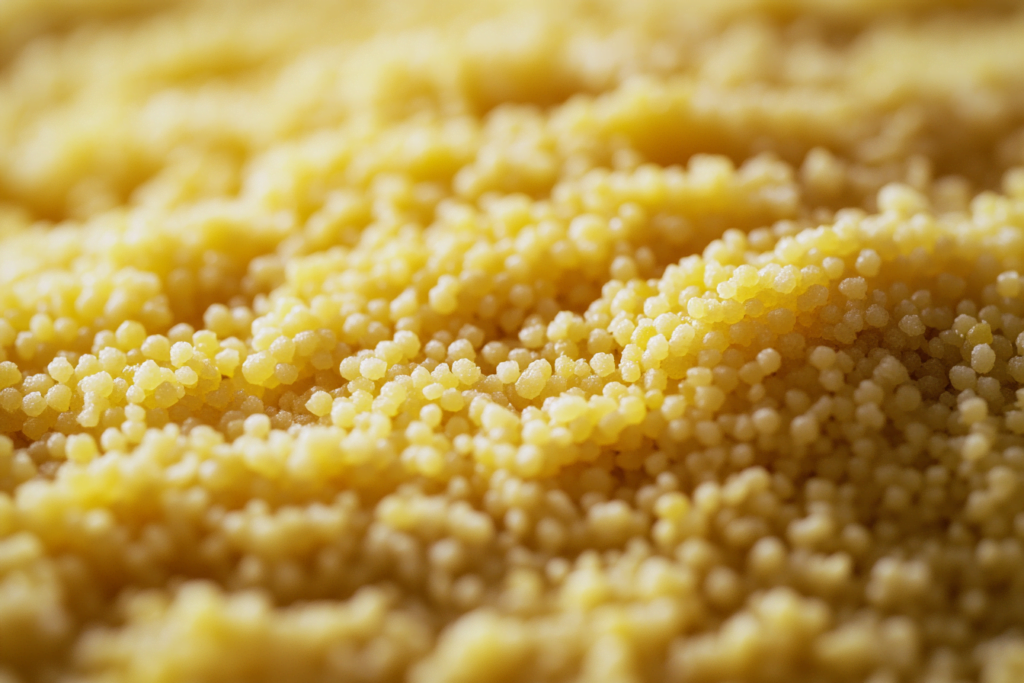
One of the most popular ways to enjoy these grains is in a refreshing quinoa salad. This dish is not only vibrant and colorful but also packed with nutrients, making it perfect for a light lunch or a side dish at dinner.
To prepare this salad, start by cooking quinoa-based couscous according to the package instructions. Once cooked, let it cool to room temperature. In a large bowl, combine the couscous with cherry tomatoes, diced cucumber, red onion, and chopped parsley. For a burst of flavor, add crumbled feta cheese and a handful of olives.
For the dressing, whisk together olive oil, lemon juice, minced garlic, salt, and pepper. Drizzle the dressing over the salad and toss everything together until well combined. This quinoa salad is not only delicious but also a great way to incorporate more vegetables and healthy grains into your diet.
Spiced Corn Pilaf
For a warm and comforting dish, try making a spiced corn pilaf. This recipe combines the mild flavor of corn-based couscous with aromatic spices, creating a dish that’s both satisfying and flavorful.
Begin by sautéing chopped onions and garlic in a bit of olive oil until they become translucent. Add cumin, coriander, and a pinch of cinnamon, stirring until the spices are fragrant. Stir in the corn couscous and toast it lightly before adding vegetable broth. Cover and let it simmer until the couscous is tender and the liquid is absorbed.
To finish, fold in toasted almonds, raisins, and fresh cilantro. This spiced pilaf pairs beautifully with grilled chicken or roasted vegetables, making it a versatile addition to any meal.
Sweet Rice Pudding
For those with a sweet tooth, a rice couscous pudding is a delightful way to enjoy these grains. This creamy dessert is reminiscent of traditional rice pudding but with a unique twist.
To make the pudding, cook rice-based couscous in a mixture of milk and coconut milk until it becomes soft and creamy. Stir in sugar, vanilla extract, and a pinch of cinnamon for flavor. Once the couscous is fully cooked, let it cool slightly before serving.
Top the pudding with fresh berries, a drizzle of honey, or a sprinkle of toasted coconut for added texture and flavor. This sweet treat is perfect for dessert or even as a comforting breakfast option.
In this section, we’ve explored a variety of delicious recipes using alternative grains, from savory salads to sweet puddings. In Part 3, we’ll dive into creative ways to use these grains in your cooking, offering inspiration for every meal.
Creative Uses for Alternative Grains
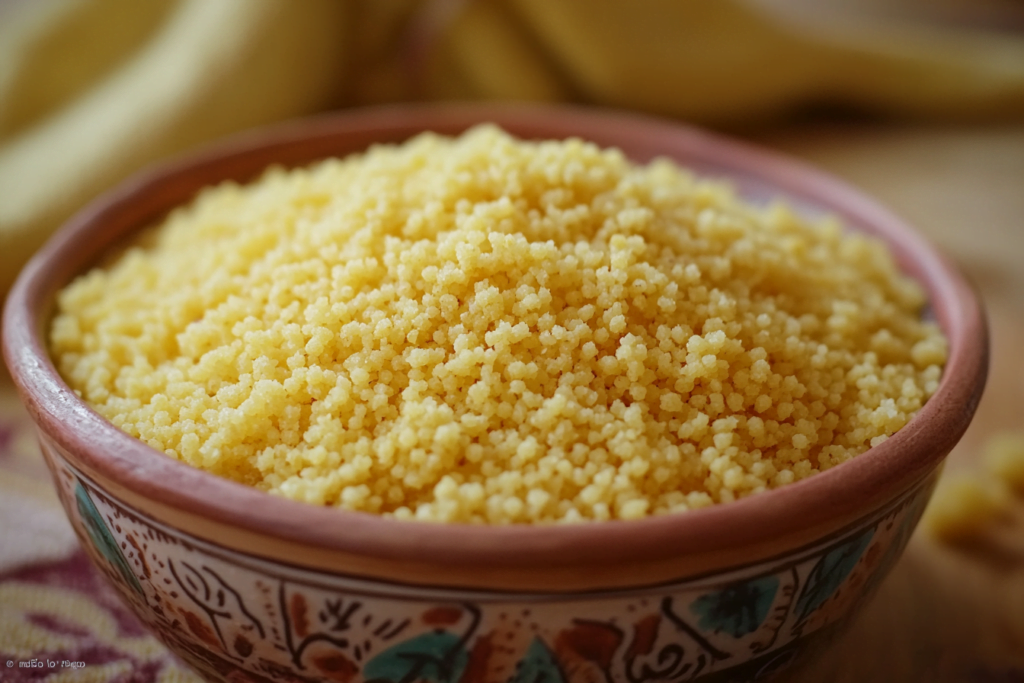
Stuffed Peppers with Quinoa
Stuffed peppers are a classic dish that can be easily adapted to include quinoa. This version uses quinoa or corn couscous as a filling, providing a nutritious and satisfying meal that’s both colorful and delicious.
To prepare, start by cooking your choice of couscous according to the package instructions. Meanwhile, slice the tops off bell peppers and remove the seeds. In a skillet, sauté onions, garlic, and diced tomatoes until soft. Add the cooked couscous, black beans, corn, and a sprinkle of cumin and chili powder. Mix well and season with salt and pepper.
Stuff each pepper with the couscous mixture and place them in a baking dish. Top with shredded cheese if desired, and bake until the peppers are tender and the cheese is bubbly. These stuffed peppers make a hearty main course or a vibrant side dish.
Breakfast Bowl with Rice Couscous
Start your day with a nutritious and energizing breakfast bowl. This dish combines the goodness of couscous with fresh fruits and nuts, creating a wholesome breakfast that’s both satisfying and delicious.
Cook quinoa or rice-based couscous in almond milk or your preferred milk alternative. Once cooked, stir in a touch of honey or maple syrup for sweetness. Divide the couscous into bowls and top with sliced bananas, berries, and a handful of nuts or seeds. A dollop of yogurt or a sprinkle of cinnamon can add extra flavor and texture.
This breakfast bowl is not only quick to prepare but also customizable, allowing you to use whatever fruits and toppings you have on hand. It’s a great way to incorporate gluten-free grains into your morning routine.
Stir-Fry with Corn Couscous
For a quick and easy dinner, try a stir-fry with corn couscous. This dish is perfect for using up leftover vegetables and can be customized to suit your taste preferences.
Begin by cooking corn or rice couscous according to the package instructions. In a large pan, heat some oil and sauté your choice of vegetables, such as bell peppers, broccoli, and snap peas. Add cooked chicken, shrimp, or tofu for protein.
Once the vegetables are tender, stir in the cooked couscous and season with soy sauce, ginger, and a splash of sesame oil. Toss everything together until well combined and heated through. This stir-fry is a quick, nutritious meal that’s perfect for busy weeknights.
In this section, we’ve explored creative ways to use alternative grains, from stuffed peppers to breakfast bowls. In Part 4, we’ll discuss how to incorporate these grains into various cuisines, showcasing their versatility and global appeal.
Incorporating Alternative Grains into Global Cuisines
Mediterranean Tabbouleh with Quinoa
Quinoa can be a fantastic base for a Mediterranean-inspired tabbouleh. This refreshing salad is traditionally made with bulgur, but using quinoa or rice couscous offers a gluten-free alternative that’s just as delicious.
To make tabbouleh, cook your choice of couscous and let it cool. In a large bowl, combine the couscous with chopped parsley, mint, diced tomatoes, and cucumbers. For the dressing, whisk together olive oil, lemon juice, salt, and pepper. Toss the salad with the dressing and let it sit for a few minutes to allow the flavors to meld. This tabbouleh is perfect as a side dish or a light lunch.
Indian-Style Biryani with Corn Couscous
For a flavorful and aromatic dish, try making an Indian-style biryani using corn couscous. This version uses quinoa or corn couscous, infused with spices and layered with vegetables and protein.
Start by cooking the couscous with a pinch of saffron for color and flavor. In a separate pan, sauté onions, garlic, and ginger until fragrant. Add spices like cumin, coriander, and garam masala, along with vegetables such as peas, carrots, and bell peppers. Stir in cooked chicken or chickpeas for protein.
Layer the spiced vegetables and protein with the saffron-infused couscous in a baking dish. Cover and bake until heated through. Garnish with fresh cilantro and toasted almonds before serving. This biryani is a delightful way to enjoy gluten-free couscous with a burst of Indian flavors.
Mexican Bowl with Rice Couscous
Rice couscous can also shine in Mexican cuisine, particularly in bowls. Its mild flavor makes it an excellent base for a variety of toppings.
To make a Mexican bowl, use the couscous as the base. Fill it with seasoned black beans, diced avocado, chopped tomatoes, and a sprinkle of queso fresco. Drizzle with lime juice and top with fresh cilantro. These bowls are light, refreshing, and perfect for a quick and healthy meal.
In this section, we’ve explored how alternative grains can be incorporated into global cuisines, from Mediterranean tabbouleh to Indian biryani. In Part 5, we’ll address common questions and concerns about these grains, providing tips and tricks for cooking and storing this versatile ingredient.
Common Questions and Concerns
How to Store Alternative Grains
Storing these grains properly is essential to maintain their freshness and quality. Uncooked couscous should be kept in an airtight container in a cool, dry place, such as a pantry. This helps prevent moisture and pests from affecting the grains. When stored correctly, uncooked couscous can last for several months.
Once cooked, couscous should be stored in the refrigerator in an airtight container. It will stay fresh for up to five days. If you have leftovers, you can also freeze cooked couscous. Spread it out on a baking sheet to cool, then transfer it to a freezer-safe bag or container. Frozen couscous can be reheated in the microwave or on the stovetop, making it a convenient option for quick meals.
Can You Substitute Alternative Grains for Regular Couscous?
Yes, you can substitute these grains for regular couscous in most recipes. The texture and flavor may vary slightly depending on the type of couscous you use, such as quinoa, corn, or rice-based. However, these alternatives can still provide a delicious and satisfying result.
When substituting, follow the cooking instructions specific to the type of couscous you are using, as cooking times and liquid ratios may differ from traditional couscous. With a little experimentation, you can enjoy your favorite couscous dishes without the gluten.
FAQs
- Is Gluten-Free couscous healthy?
Yes, these grains can be a healthy addition to your diet. They provide essential nutrients like fiber, protein, and vitamins, depending on the grain used. - What is the best brand for these grains?
There are several brands that offer high-quality options, such as Bob’s Red Mill and Ancient Harvest. It’s essential to read labels and choose a brand that suits your taste and dietary needs. - Can I make these grains at home?
Yes, you can make couscous at home using grains like quinoa or millet. Cook the grains according to their specific instructions, then fluff them with a fork to achieve a couscous-like texture.
In this section, we’ve addressed common questions and concerns about these grains, from storage tips to substitution advice. In Part 6, we’ll share personal experiences and anecdotes related to cooking with these grains, adding a personal touch to our exploration.
Personal Experience with Alternative Gluten-Free Couscous
My Culinary Journey with Wheat-Free Couscous
When I first ventured into the world of wheat-free couscous, I was a bit skeptical. Having grown up with traditional couscous, I wondered if the gluten-free versions could match the taste and texture I loved. But, oh boy, was I in for a pleasant surprise!
My journey began with quinoa-based couscous. I remember the first time I cooked it; the nutty aroma filled my kitchen, and I couldn’t wait to dig in. I tossed it with roasted vegetables and a lemon-tahini dressing, and the result was nothing short of delightful. The quinoa couscous had a slightly chewy texture that paired perfectly with the creamy dressing and crunchy veggies.
Encouraged by this success, I decided to experiment with corn couscous. I used it to make a spiced pilaf, adding cumin, coriander, and a handful of raisins. The corn couscous absorbed the spices beautifully, creating a dish that was both comforting and flavorful. It quickly became a family favorite, especially when paired with grilled chicken or fish.
One of my most memorable experiences was making a breakfast bowl with rice couscous. I cooked it in almond milk, then topped it with fresh berries, nuts, and a drizzle of honey. It was a refreshing change from my usual oatmeal, and I loved how easy it was to customize with different toppings.
Through these culinary adventures, I’ve come to appreciate the versatility and deliciousness of these grains. They’ve opened up a world of possibilities in my kitchen, allowing me to enjoy a variety of dishes without compromising on taste or texture. Whether I’m making a savory salad or a sweet dessert, these grains have become a staple in my pantry.
In my experience, these grains are more than just a substitute; they’re unique ingredients that bring their own set of flavors and textures to the table. If you’re considering giving them a try, I wholeheartedly recommend it. You might just find, like I did, that they’re a delightful addition to your culinary repertoire.
In Part 7, we’ll wrap up our exploration by discussing the environmental impact and sustainability of these grains’ production, providing a broader perspective on this versatile ingredient.
Environmental Impact and Sustainability
Sustainable Production of Alternative Grains
The production of these grains involves various crops like quinoa, corn, and rice, each with its own environmental footprint. Understanding the sustainability of these grains can help you make more eco-friendly choices in your diet.
Quinoa, for instance, is primarily grown in the Andean region of South America. Its popularity has led to increased demand, which has both positive and negative effects. On the one hand, it provides economic benefits to local farmers. On the other hand, it can lead to over-farming and soil depletion if not managed sustainably. To support sustainable quinoa production, look for fair-trade and organic certifications when purchasing.
Corn and rice, commonly used in these grains, also have environmental considerations. Corn is often grown in monocultures, which can lead to soil degradation and increased pesticide use. However, sustainable farming practices, such as crop rotation and integrated pest management, can mitigate these impacts. Rice cultivation, particularly in flooded fields, can produce methane emissions, a potent greenhouse gas. Efforts to develop water-saving techniques and methane-reducing practices are ongoing to make rice farming more sustainable.
Choosing Eco-Friendly Grains
When selecting these grains, consider brands that prioritize sustainability. Look for products that are certified organic or non-GMO, as these often adhere to more environmentally friendly practices. Supporting local producers can also reduce the carbon footprint associated with transportation.
Additionally, consider the packaging of the couscous you purchase. Opt for brands that use recyclable or minimal packaging to further reduce environmental impact. By making conscious choices, you can enjoy these grains while supporting sustainable agriculture.
The Environmental Benefits of Plant-Based Diets
Incorporating these grains into a plant-based diet can have positive environmental implications. Plant-based diets generally have a lower carbon footprint compared to diets high in animal products. By choosing plant-based meals that include these grains, you contribute to reducing greenhouse gas emissions and conserving natural resources.
Moreover, plant-based diets often require less water and land compared to animal agriculture. By embracing these grains and other plant-based foods, you can enjoy delicious meals while supporting a more sustainable food system.
In conclusion, these grains are versatile and nutritious ingredients that can be enjoyed in a variety of dishes. From their health benefits to their environmental impact, they offer numerous advantages that make them a valuable addition to any diet. Whether you’re exploring new recipes or looking to make more sustainable food choices, these grains are a fantastic option that can enhance your culinary experience and contribute to a healthier planet.
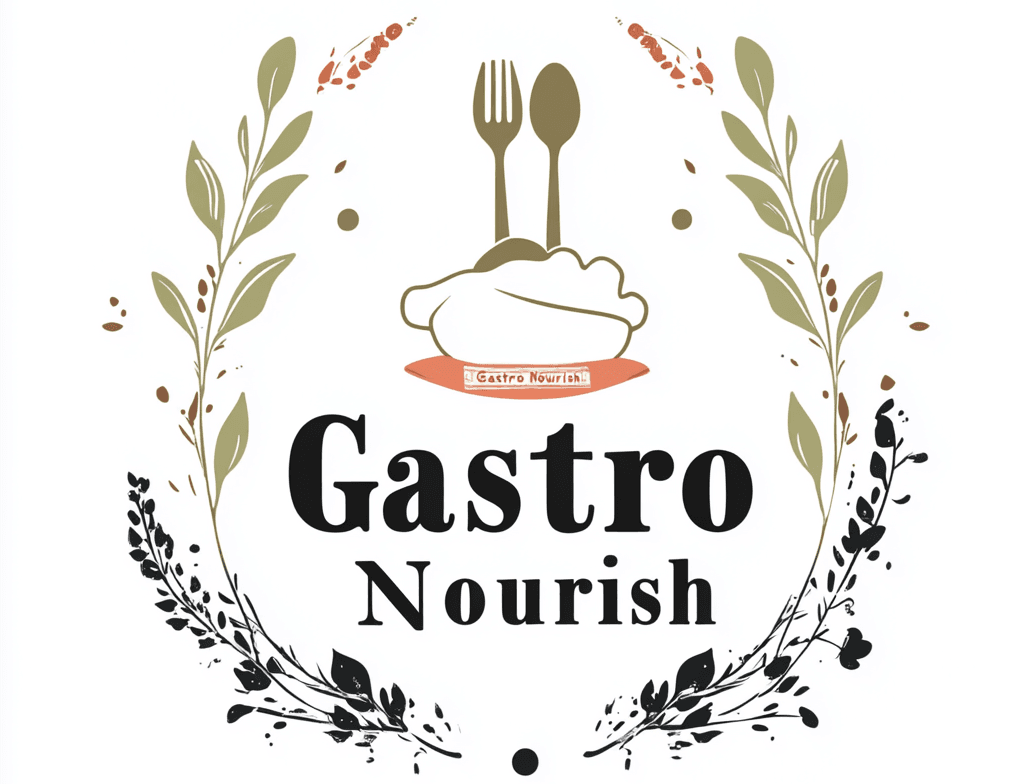
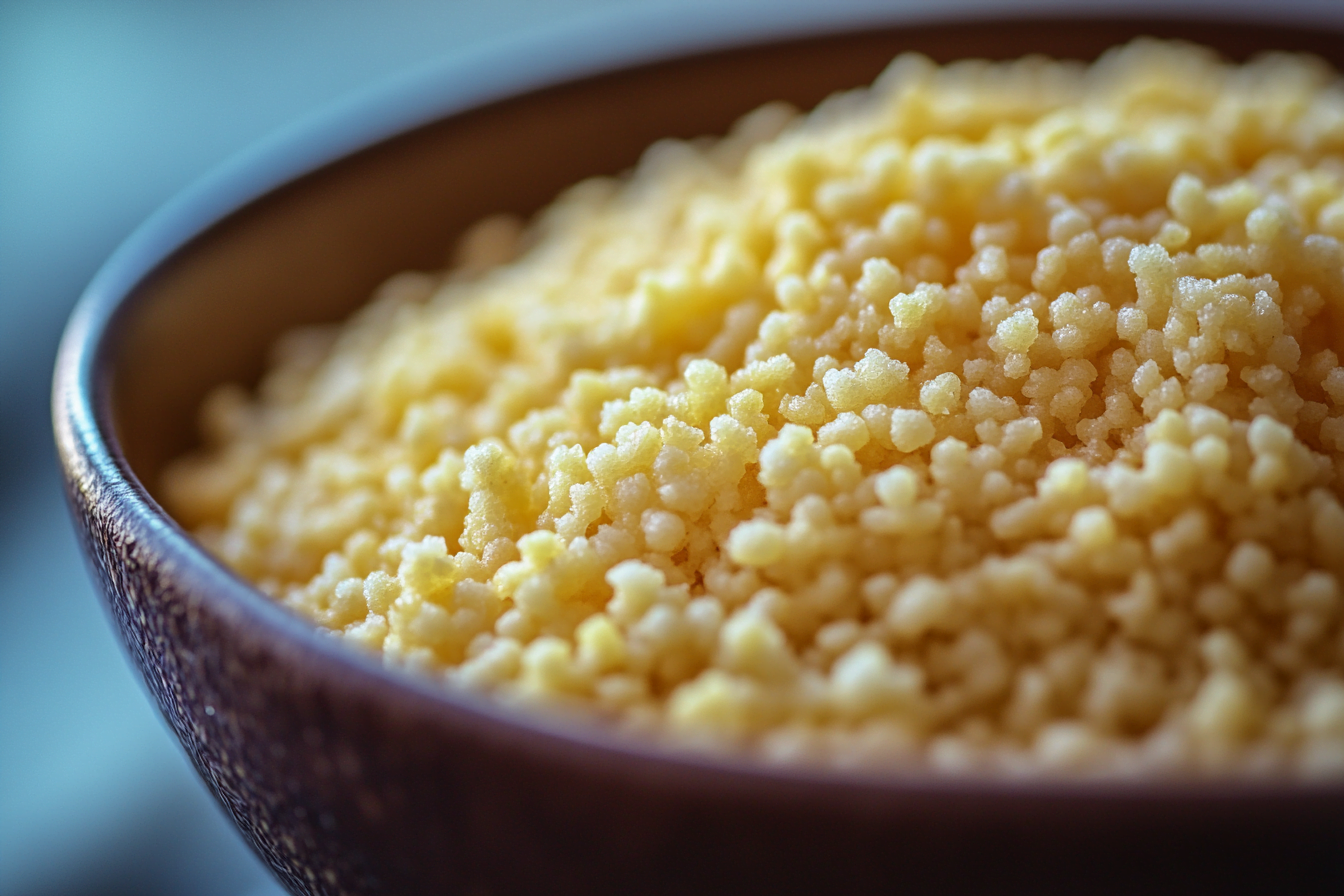
14 thoughts on “Discover Delicious Gluten-Free Couscous Recipes and Benefits”